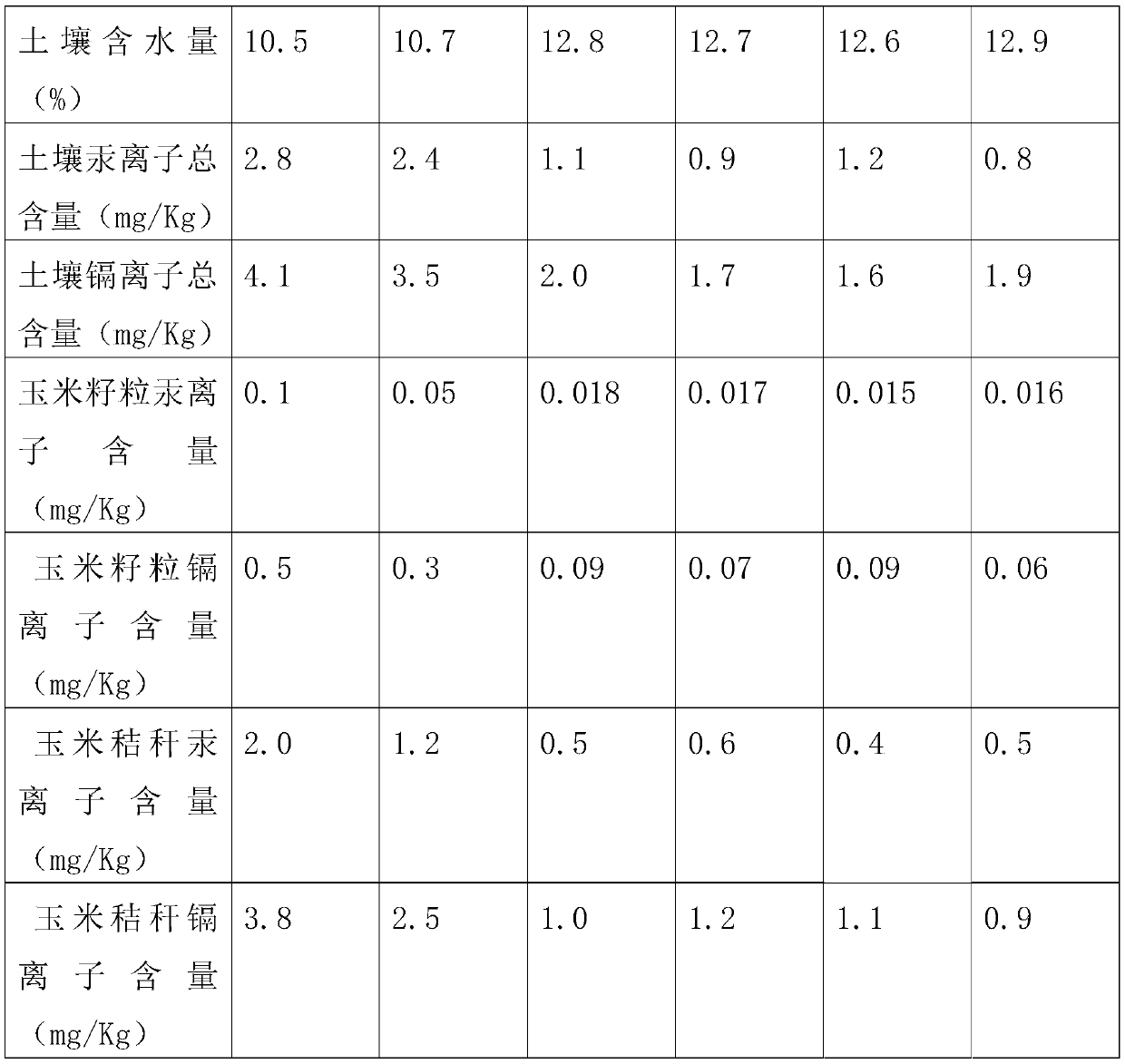Saline-alkali soil heavy metal ion remover and preparation method thereof
A technology of heavy metal ions and saline-alkali land, applied in biochemical equipment and methods, soil conditioning materials, chemical instruments and methods, etc., can solve the problems of weak adsorption capacity of adsorbent substances, high cost of physical repair, high repair cost, etc., to reduce water evaporation speed, improve air permeability and water permeability, good adsorption effect
- Summary
- Abstract
- Description
- Claims
- Application Information
AI Technical Summary
Problems solved by technology
Method used
Image
Examples
Embodiment 1
[0021] A heavy metal ion remover for saline-alkali soil, comprising the following raw material components in parts by weight: 30 parts of mineral source humus superfine powder, 5 parts of Phanerochaete chrysosporium extracellular polymer, 4 parts of cyanobacteria liquid, lignin grafting 15 parts of polyacrylonitrile, 5 parts of citric acid, 20 parts of straw powder, 15 parts of desulfurized gypsum.
[0022] The particle size of the mineral source humus ultrafine powder is 1 μm.
Embodiment 2
[0024] The preparation method of the saline-alkali soil soil heavy metal ion remover of embodiment 1, concrete steps are as follows:
[0025] A: Mineral source humus is taken and crushed by a grinder at normal temperature and pressure, then regulated by an air classifier and sieved to obtain mineral source humus superfine powder with a particle size of 1 μm;
[0026] B: The straw is pulverized by a pulverizer and then passed through a 750-mesh sieve to obtain straw powder;
[0027] C: Take 2.0g potato extract, 20g glucose, 3g KH 2 PO 4 , 1.5g MgSO 4 ·7H 2 O, 0.1mg FeSO 4 ·7H 2 O, 0.2 mg CuSO 4 ·5H 2 0. Put 8 mg of vitamin B1 into the conical flask, set the volume to 1000ml with distilled water, inoculate Phanerochaete chrysosporium in the above conical flask by 5% of the inoculum amount, and inoculate the conical flask at a temperature of 35°C and at a temperature of 120r / min. Shaking culture was carried out under the condition of rotating speed, and the culture in the...
Embodiment 3
[0031] A heavy metal ion remover for saline-alkali soil, comprising the following raw material components in parts by weight: 35 parts of mineral source humus superfine powder, 6 parts of Phanerochaete chrysosporium extracellular polymer, 5 parts of cyanobacteria liquid, lignin grafting 16 parts of polyacrylonitrile, 6 parts of citric acid, 21 parts of straw powder, 16 parts of desulfurized gypsum.
[0032] The particle size of the ultrafine powder of mineral source humus is 5 μm.
PUM
| Property | Measurement | Unit |
|---|---|---|
| Particle size | aaaaa | aaaaa |
| Particle size | aaaaa | aaaaa |
| Particle size | aaaaa | aaaaa |
Abstract
Description
Claims
Application Information
 Login to View More
Login to View More - R&D
- Intellectual Property
- Life Sciences
- Materials
- Tech Scout
- Unparalleled Data Quality
- Higher Quality Content
- 60% Fewer Hallucinations
Browse by: Latest US Patents, China's latest patents, Technical Efficacy Thesaurus, Application Domain, Technology Topic, Popular Technical Reports.
© 2025 PatSnap. All rights reserved.Legal|Privacy policy|Modern Slavery Act Transparency Statement|Sitemap|About US| Contact US: help@patsnap.com


